Hey readers! I hope everyone had a splendid Columbus Day! It
just occurred to me that despite the fact that this is my blog, and the
fact that most people use blogs to tell readers about their lives, I
haven't done that lately! I have some news to share! As some of you might
recall, I have an account/commonly write on the website Fanfiction.net.
(You can reach my profile page here) The last time I talked about
it on this blog was when I started a story called Jurassic World: Returnto Isla Nublar. But guess what? I've long since finished that story and
another story (Phineas and Ferb's Dinosaur Adventure), and
started another story. The new story I started a couple of months ago is called
Jurassic World. Now since this is my blog, I figured I'd give you
guys a little summary of the story:
“Jurassic World is about Dr. Alan Grant, a paleontologist who's struggling to financially support his paleontological expeditions because of his controversial theories on his favorite dinosaur – Velociraptor. He's also in the middle of a somewhat strained relationship with his son, Luke, whom he has little time for. Everything changes when a mysterious bioengineering corporation called InGen creates a machine that enables humans to travel through time. They request him and his girlfriend, Dr. Ellie Sattler, to lead a special expedition called JurassiQuest into the past to study some of the most amazing animals that have ever walked the earth – living, breathing dinosaurs! With a team assembled, Grant leads them back in time, but once they get there, they find themselves in for a truckload of surprises!”
Doesn't it sound exciting? I am currently on chapter 6, so if
you'd like to read the story, you won't have to read too many chapter to catch
up. Click this link to be taken directly to the story.
In addition to that, you can now also check me out on Instagram
(again, I've had an active account on there for months and haven't mentioned it
on my blog). To be honest, I decided to get an account on Instagram
because my favorite actress, Cozi Zuehlsdorff, got an account on there. After
which, I found out just how many other people I know (including my co-author
Joy Hammond) are on there. Man! How'd I miss out on the Instagram-craze?
Regardless, I'm on that website now and love it a ton! So be sure to check me
out by going here.
Due to these new updates, I've updated my links page.
Now let's move on to our “usuals”.
Days till:
It is: 14 days till Harvest Day
It is: 16 days till daylight savings time ends
It is: 25 days till Veteran's Day
In the Spotlight:
Once again I'm back this week with some news about, you guessed it, Jurassic World, the long-waited-for sequel to Jurassic Park III. Not much information has really been released this week, per se, but after a long wait, the official teaser poster is now online! Here it is below:
 |
| Jurassic World, "The Park is Open". |
Not only does this poster look awesome, but it also bears the film's tagline: "The Park Is Open". I can't wait to see the movie June 12, 2015! If I'm able to see it in theaters, you know I'll be first in line to buy tickets. We'll finally be able to see John Hammond's dream of a park full of dinosaurs come true!
Topic of the Week by Christian Ryan
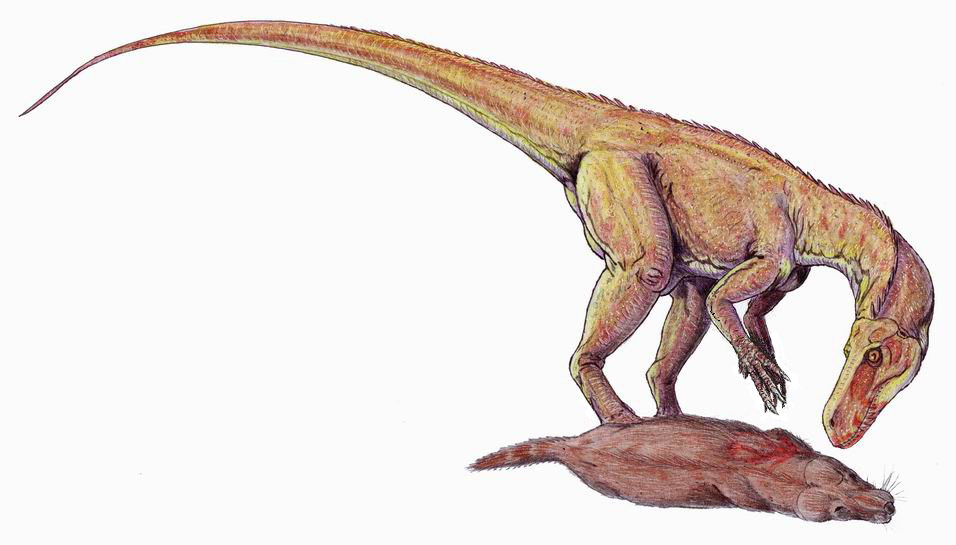 |
| Were dragons what we know call dinosaurs? |
2,350 B.C., great numbers of dinosaurs roamed the various
habitats of the pre-Flood continent Rodinia, as they had been doing for the
past 1,650 years. But this wasn't to last, as 4,350 years ago, the Genesis
Flood of Noah's time swept over the earth, overwhelming pre-Flood habitats and
drowning out and burying countless trillions of dinosaurs and other animals.
However, before the Flood, God told a man named Noah to construct an ark to
save himself, his family and two of every kind of terrestrial, air-breathing
unclean animals – this would have included dinosaurs. If this is so, this means
that not only did dinosaurs survive the great Flood, but people should have
seen them after the Flood, albeit not in the great numbers they had before.
This is what we can gather from the Bible and this is exactly what additional
evidence suggests. Perhaps there's more to tales and legends of large reptilian
creatures similar to dinosaurs, usually called dragons, than mere fantasy.
 |
| Is there more to dragons than what meets the eye? |
Dragons – they've been featured in art and folklore for
thousands of years. Almost every culture in the world features dragons in their
history. Yet, despite the fact that many of these dragons and legends about
them are so similar, these cultures had no ways of communicating to each other
and sharing their ideas about dragons. While some dragon legends are obviously
filled with myth and fantasy, there are several that seem to be real life
accounts that actually took place. In fact, it seems that many dragon legends
feature creatures that are remarkably similar to the animals we refer to as
dinosaurs! How can this be?
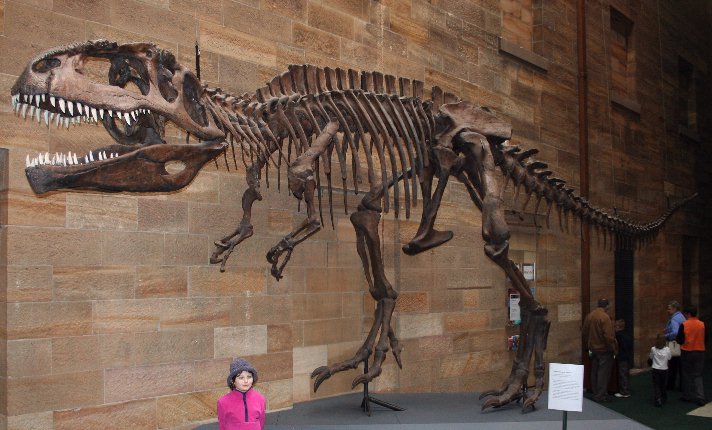 |
| Dinosaurs might have been the inspiration for dragon legends. |
Of course, one obvious option is that dinosaurs actually
lived with humans, as a Biblical perspective would suggest. But this idea is
preposterous to evolutionary thinkers, who believe dinosaurs lived 65 million
years before the first humans (62 million years before our supposed ancestor Australopithecus).
They believe that there is no evidence dinosaurs lived at the same time with
mankind. The unfortunate thing I have noticed is that many of them fail to
actually do the proper research to see if this assumption is true. In fact,
there are many evidences that can be used to support the belief that dinosaurs
lived with mankind at one time, some of which we will discuss in this article.
If dinosaurs lived with humans, we should expect them to play an impact on many
cultures. This is what we find.
 |
| There are hundreds of dragon legends and depictions all over the world, like this one embroidered with gold from Munich. |
Some people believe the reason for the similarities between
dinosaurs and dragon legends is because they believe many native people groups
who tell these dragon legends (Native Americans and Chinese are two terrific
examples) simply found the fossils of dinosaurs. These people then, according
to theory, incorporated these creatures into their mythology. There are many
problems with this idea. For instance, even though these native people were
very intelligent and well-skilled, there is no evidence that they were fossil
hunters. Even today, with our wonderful technology, unearthing the fossils of
dinosaurs takes a lot of time and patience; native people would have had even
less technology than us (not to say native people are primitive in any way),
and there's no evidence that they spent so much time uncovering fossils. One evolutionist I was talking with recently argued that if ancient people groups found at least the skull exposed, then they'd make up and share stories of giant monstrous reptiles -- dragons -- which is how legends of them spread all over the world. Unfortunately, there is a major problem with this idea.
When dinosaur fossils are found, they very rarely found complete. In fact,
they're normally very incomplete. Today, scientists often only find a
few teeth, claws or bone or skull fragments; it is often hard for them to make a correct
identification, even with their knowledge on the topic of paleontology and/or
anatomy. In fact, in order to piece together an incomplete dinosaur skeleton, scientists often use fossils from related species to refer to (this is something those ancient cultures couldn't do in the days before internet and telephones). Yet, if you look at a dragon depiction or description in just about every culture on the planet, they generally have similar appearances. If these ancient cultures based the dragon depictions on bones, then shouldn't they vary in appearance based upon personal interpretation of the fossils? Native peoples didn't have knowledge of paleontology; they were
experienced in other areas. In addition to the facts I just mentioned, many
native people (Native Americans specifically), believe the earth to be sacred
and will normally avoid digging through the soil. To learn much of anything
about fossils, you have to dig them up because most of them aren't simply lying
on the earth's surface. This is because when a fossil is exposed, the elements
quickly cause it to disintegrate.
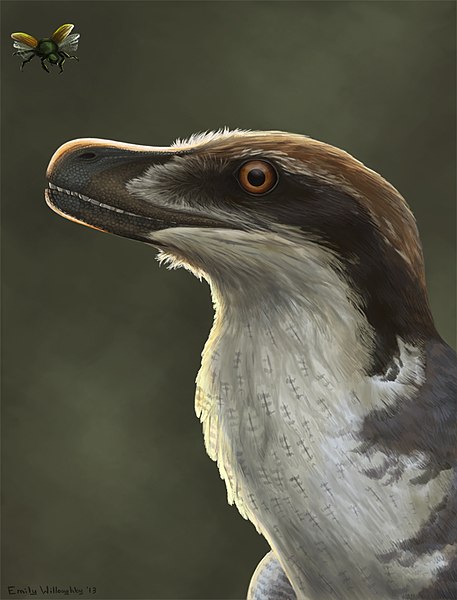 |
| The only fossils of Acheroraptor that we have are some teeth and jaw bone fragments. Scientists used a close relative, Velociraptor, to fill in the missing fossils. Ancient cultures couldn't do this. |
Many dragon legends around the world, once stripped of their
magical attributes, seem to be based upon encounters with creatures that really
existed, and many of them seem to be the same animals we call dinosaurs or are
other dinosaur-like animals, telling us dinosaurs and similar animals existed
with man after the Flood. Now as I said before, the worldwide number of
dinosaurs decreased dramatically during the Flood. The climate after the Flood
was very different from the one before – there were now seven continents rather
than one and temperature fluctuations were more extreme. This meant less food
and living space for dinosaurs. Due to environmental conditions, the dinosaurs
gradually went into decline. During their decline is when many dragon
encounters took place and people told or wrote stories about them or about what
occurred at the time. Even the Bible speaks of dragons, many of which seem to
have been dinosaurs (you won't find the word “dinosaur” in ancient writings
such as the Bible it was only invented in 1841, long after the King James
Version and more ancient writings were complete). One of the two best examples
given is in Job chapter 40, starting in verse 15. The events in this book take
place after the Flood and shortly after humans dispersed from the Tower of
Babel. God describes an animal called behemoth. He says that behemoth is one of
– if not the – largest animals God ever made. It had a tail that swayed
like a cedar, ate low-growing plants (specifically grass), strong bones and
muscles. There is no animal that fits this description better than a member of
the sauropod group of dinosaurs, perhaps an animal like the 60-ton Brachiosaurus
or the recently discovered 62-ton-and-still-growing Dreadnoughtus. The
Bible also mentions a semi-aquatic dragon called leviathan, a creature that
wasn't a dinosaur, but a similar creature, possibly something like the 40-foot
giant crocodile Sarcosuchus. The word “dragon” is mentioned 21 times in
the Old Testament of the King James Version of the Bible.
 |
| Perhaps behemoth described in the book of Job is a sauropod like Dreadnoughtus. |
Outside the Bible, there are countless legends and stories
that speak of dragons. Many of these stories feature heroes and knights killing
these “evil” dragons for fame and fortune, for food or to protect themselves.
These dragons are said to be very dangerous creatures like we believe many
carnivorous dinosaurs to have been. One famous dragon legend is recorded in the
Epic of Gilgamesh. In this story, the ancient Sumerian hero Gilgamesh comes
face to face with a large dragon. It says that he killed it and kept the
animal's head for a trophy. You can learn about many more additional dragon
legends from the wonderful book The Great Dinosaur Mystery by
Paul Taylor.
 |
| Perhaps some ancient dragons were similar to creatures like this Gorgosaurus. |
Dragons aren't only written about in legends and stories
though. Many notable people describe dragons they have seen in their writings.
These people include Herodotus, an ancient Greek writer, Alexander the Great,
Cassius Dio and even Marco Polo. This is only a small list, as there are many
others. But why should we discount their accounts of dragons just because
dragons are generally believed to be mythical beings?
 |
| Marco Polo wrote about a dragon he saw. |
Are you aware that dinosaur-like creatures are also depicted
in art around the world? In Australia, Aborigines of the Kuku Yalanji tribe
have described and painted a monster of the water that resembles a plesiosaur.
In Utah, petroglyphs created by Native Americans depict not only sauropod-like
creatures, but also animals that greatly resemble pre-Flood pterosaurs, such as
Pteranodon and Quetzalcoatlus. In fact, the Thunderbird of Native
American legend might be a large species of pterosaur.
 |
| Perhaps the Thunderbird of native American legend was actually a pterosaur like Quetzalcoatlus. |
When talking about dragons, I must not fail to speak of
Medieval dragons! Dragons are commonly depicted in European art, literature and
legends. Contrary to the dragons of Chinese folklore, which are commonly
portrayed as good creatures, the European dragons are normally portrayed as
evil. There are many accounts of brave and noble knights who had to face these
deadly and fire-breathing creatures . . . wait, fire-breathing? Surely that's
fictitious!
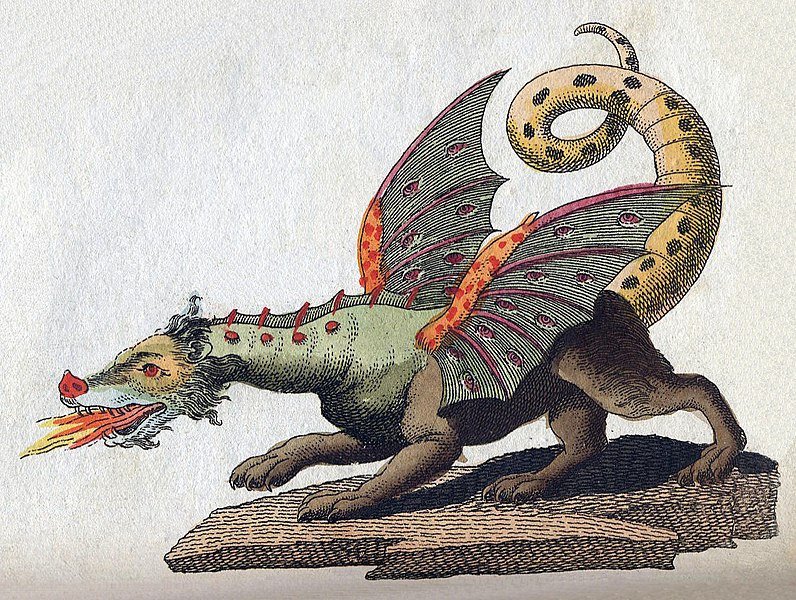 |
| Wait? Fire-breathing dragons? Surely THAT'S fictitious! Right? |
Well, let's take a closer look at the concept of
fire-breathing dragons. Now, today, all we have of dragons (aka dinosaurs) are
their fossils. Fossils are awesome, but they don't really tell you much
about what features or abilities these
creatures might have had. Think about it. If you found the skeleton of an
electric eel, would you be able to tell it can produce its own electricity? Of
course not! In fact, you wouldn't even be able to call it an electric eel! The
same is true with skunks; skunk fossils (yes, we've found skunk fossils) give
no indication of their smelly ability. The bombardier beetle is able to spray
burning chemicals from its rear end to fend off predators. Again, there is no
way we could know this from fossils. If a little beetle can accomplish this,
why not a dragon? The truth is, we really don't know if dinosaurs could have
possessed this ability, but dragon legends seem to suggest some of them, or
some dinosaur-like creatures, might have been able to do this.
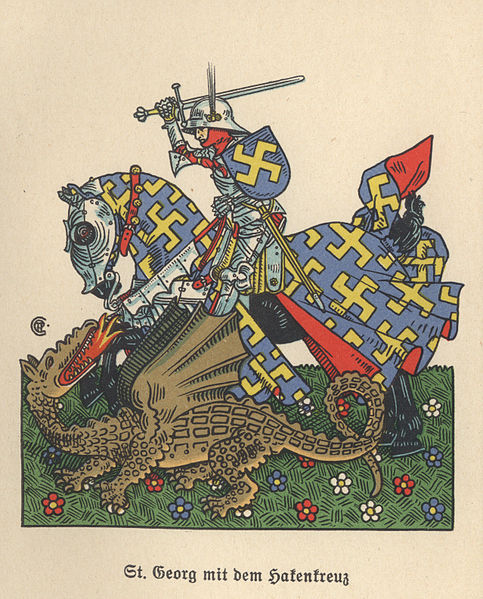 |
| St. George is said to have killed a dragon. |
Back on the topic of European dragons! Many people have heard
of the famous tale of St. George and the dragon. In this story, a town is faced
with trouble when a dragon takes residence in a lake near a village. In order
to keep the dragon content, the villagers had to feed it several of their sheep
each day. After they ran out of sheep, they began feeding it their sons and
daughters. But one day, when the villagers had prepared the village's king's
daughter to be fed to the dragon by tying her up next to the lake, St. George –
a Christian knight – happened to be passing by and decided to kill the dragon.
He met the dragon face to face and drove his lance through the reptile's heart.
Afterward, all the villagers became Christians and became baptized. Of course,
we don't know whether or not this story is true – and if so, how much – but it
seems likely once you accept that dinosaurs lived with man. When I think of
this story, Spinosaurus and its relations, other members of the
spinosauridae family, come to my mind. These dinosaurs seem to have been
semi-aquatic and lived in and around the water; maybe a spinosaur was the
dragon St. George fought? We may never know.
 |
| Did a creature like Spinosaurus inspire dragon legends? Maybe the sails of these unique dinosaurs gave rise to the concept of winged dragons? We may never know. |
Another important thing to remember about some dragon legends
is that elements were added to the story over time, to make it more fanciful.
For instance, many magical elements have been added to dragon legends. This
also appears to have occurred with the dinosaurs themselves. After dinosaurs
went extinct, the people passing down these stories changed them either by
accident or on purpose. It is even possible that some people might have
combined the features of several dinosaurs to create the look of the “dragons”
for their story.
 |
| Baryonyx looks an awful lot like dragon depictions in many cultures. |
 |
| Dragons play a huge part in ancient Chinese legends. |
I'd like to introduce you to a special dinosaur discovered in
2006 called Dracorex. You can see a picture of it below. Does it remind
you of a creature we've been discussing? This seems to support the notions that
dragons and dinosaurs are one and the same. Even the animal's name means
“dragon king”. In fact, the only thing that appears to be missing from Dracorex
that dragons of ancient legend possess is wings.
 |
| Dracorex was a pachycephalosaur who's name means "dragon". It's fossils have been discovered in North America. |
When taking all these things into account, it's easy to see
that dragons are actually dinosaurs that were seen by and interacted with
humans at some time during their past, after the Flood. So why aren't dragons
still around today? Well, remember when I said that dinosaurs were on a gradual
decline following the Flood? You might also recall that I said the environment
was much different at this time. This would have definitely kept their numbers
down. If dragon legends are any indication, then it's extremely likely that
humans would have killed many dinosaurs, helping their numbers go down further.
What dragon legends really seem to represent is the gradual decline of
dinosaurs as the environmental conditions cut down their numbers and the last
of those individuals were killed off by humans. It seems that some of the last
dinosaurs might have existed in Europe, during Medieval times, where they
fought dragon slayers seeking victory. The last dinosaurs ever to walk the
earth probably went extinct around 1,000 years ago, give or take, as this is
when many of the last dragon legends were created based upon dinosaur
encounters and when a lot of the legends start to become filled with fantasy
and magic.
 |
| Dragons -- dinosaurs -- probably met their demise due to climate conditions and humans. |
And dragons would remain nothing but memories and creatures
of mythology for several hundred years . . . until people in England discovered
the scant fossilized remains of reptiles that lived in the ancient past. Two of
these creatures would named Iguanodon and Megalosaurus and start
a fetish so strong that we'd still be under its effects, hundreds of years
later. In the 21st century, dragons once again roam the earth, just
like they used to, but this time through the imaginations of those both young
and old.
 |
| When you take all the evidence into consideration, it is rather reasonable that dragons were the creatures we now call dinosaurs. This Velociraptor seems to be in agreement. |
References:
Disclaimer: Many (or in some cases all) of
the photographs and images above are not mine. If you own one or more of them
and would like them to be removed, politely let me know via one or both of the
email addresses above.

No comments:
Post a Comment